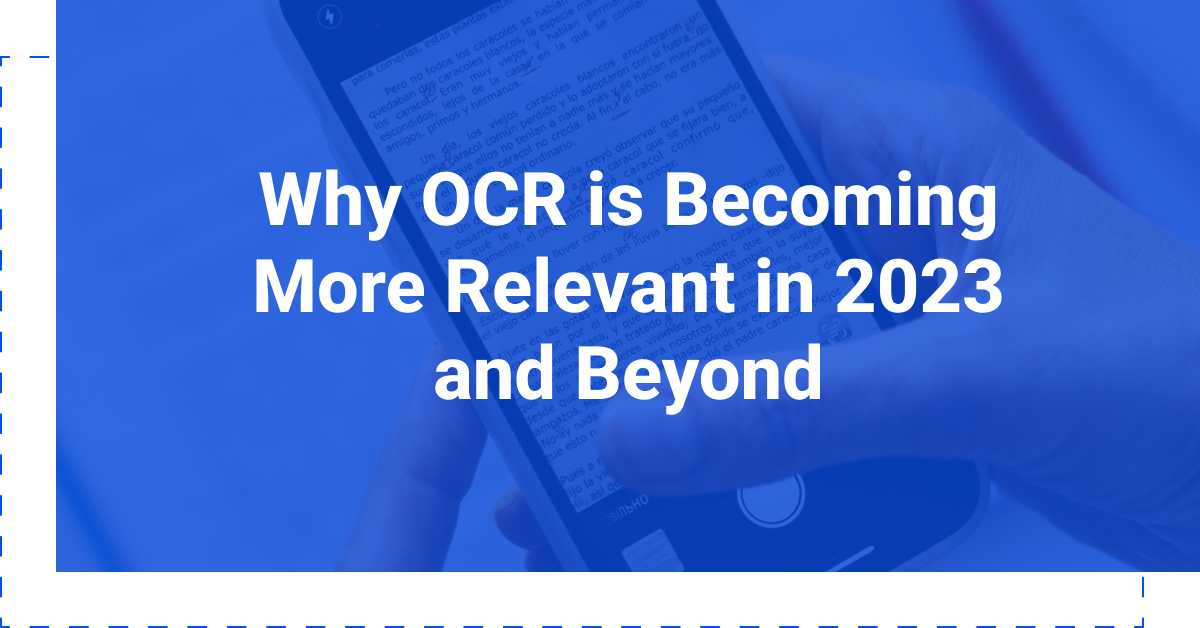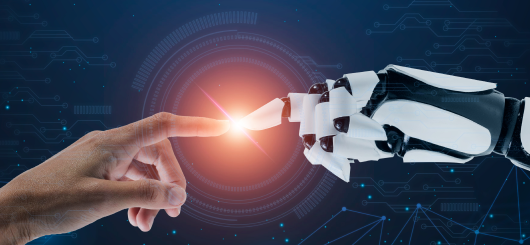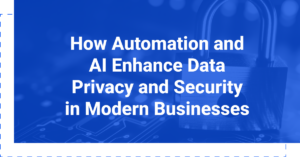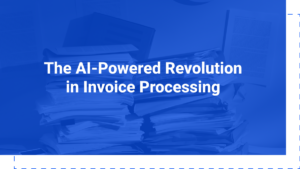Why OCR is Becoming More Relevant in 2023 and Beyond

- Product
- • October 18, 2023
- • 6 min read
Share:
Table of Contents
Let’s stay in touch
Subscribe for more content handpicked just for you.
The year 2023 was significant for how many more businesses got acquainted with the possibilities of AI. The technology quickly became ubiquitous as companies incorporated different applications into customer service, CRM, IT, and various other areas of their organization.
Overall, AI has served a wide variety of purposes to make simple processes automatic, and automatic processes even more efficient and intelligent. For the second point, AI-powered automation has helped evolve already streamlined businesses to create more robust systems for training and optimizing the way processes get completed.
Within that field of AI-powered automation, OCR AI has had a particularly productive 2023 and will continue to become more relevant to document-intensive businesses going forward. As more companies understand the value of this intelligent document processing and character recognition, more are embracing this superior technical solution to rapidly process information and turn data into action even faster.
What is OCR?

OCR, or optical character recognition, is a technology that scans, extracts, and converts text and images of text into a machine-readable format.
It is used extensively by document-heavy industries as a data capture technology in healthcare, insurance, legal, and banking to turn massive quantities of physical documentation into actionable digital data sets to manage information, extrapolate conclusions, and more rapidly inform various business processes. Using OCR replaces the tedious labor of manual data entry that can create enormous logjams for companies and slow their ability to deliver necessary outcomes for themselves and their clients.
How Modern Automated Processing Works
As modern as it may seem, OCR as a technology has existed for decades to help reduce manual data entry and provide these industries with a means to expedite their collection process. At the time, though, the physical tools that conducted OCR were much more labor-intensive, more expensive, and overall more cumbersome for businesses to implement.
Today, modern automated processing is a much simpler, more accessible technology for companies of all sizes to take advantage of. The OCR that companies use today works in a series of stages from input to output:
- User imports the document or image
- Document or image gets preprocessed by the OCR program
- OCR program scans and analyzes the document or image
- OCR program identifies and recognizes precise characters within the document or image to be extracted
- OCR exports the necessary text from the document and delivers it to an output system, TXT file, JSTOR, or other
Though this is just a series of five seemingly simple steps, it is through this process that OCR has revolutionized the management and delivery of crucial business data.
OCR and AI: A Benefit to Businesses

What makes the modern version of OCR so powerful and impactful — particularly for businesses that leverage third-party solutions — is the level of complexity with which this technology operates. Now that it has been infused into modern OCR, AI upgrades data extraction to a whole new level.
How AI Gives OCR a Powerful Boost
Using machine learning and AI, these already sophisticated OCR technologies get a supercharge of intelligence that makes them more efficient than ever, teaching the program to continually learn new ways to extract, categorize, and recognize crucial details over time.
In an era where information is flowing even faster, and documents across industries get more complex with more data per square inch, OCR has never been more relevant. Let’s compare how traditional and and AI-powered versions of this technology have strong and increasing applications in our modern era of business.
Comparing Traditional OCR to Modern AI-Supported Solutions
Traditional OCR is still an effective solution for many businesses looking to achieve efficient and direct outcomes from their document processing needs. Internally, these companies simply need to establish predetermined fields for extraction and then apply that automation to their documents by acquiring, inputting, and recognizing the necessary data.
Where AI takes this even further is through intelligent recognition and machine learning. Traditional OCR follows a set pattern that a human has to designate for the machine to follow — it won’t deviate or evolve that established pattern throughout the lifecycle without a human coming back in to update it. But when imbued with AI, OCR has the ability to proactively recognize patterns and distinct features within documents, helping the system collate data from similar but differently structured documents.
In practice, this allows the OCR AI to go beyond simply extracting text from specific, narrowly defined fields in documents to develop insights, recognize text in unique images and PDFs, and even tag and archive images for future searches as necessary.
Applications of AI-Powered OCR
Considering its more intuitive analysis features, AI-powered OCR is particularly adept with document types that don’t follow a single, traditional format across an industry.
A great example of this is invoices. Though certain data points are universal across all invoices, the inherent structure of each invoice is wholly unique depending on the vendor. The layout, placement, and even input style of key data points for invoices can be completely different between two different companies — making the use of traditional OCR a lot less effective for finance departments.
Rather than that, invoice OCR with AI would be able to pick up on distinct patterns and data and learn to identify where different information gets placed on unstructured documents. Here, the AI achieves the desired outcome of translating and optimizing invoice details and ensures that the accounts payable team can process and pay vendors on time.
What OCR Gateway Can Do For You

At OCR Gateway, we provide both traditional and AI-powered versions of OCR to tackle any and all business needs across an expansive range of industries. Our document expertise covers a wide variety of forms, document types, and input methods while offering comprehensive capability for integration into any software or API as needed by the client. Some of the industries and documents we work with regularly include:
- Healthcare: In this highly sensitive HIPAA-compliant industry, our OCR solutions for healthcare allow us to handle clinical and patient data of all kinds, processing wide swaths of information to ensure organizations can deliver medical care accurately and promptly.
- Employer services: In the tricky field of unemployment insurance, we ensure that all businesses are accurately assessing and paying out benefits based on tax rate notices, benefit charge statements, and employee protests — always protecting them from fraud and overpayment.
- Finance: For any and all financial information flowing in and out of companies, we process documents for accounts payable including invoices and shipping information, ensuring the logistic management of money never gets mishandled.
How OCR Gateway Has Helped Our Customers
With our state-of-the-art automation solutions, OCR Gateway has transformed the way our customers manage and process documents and data, turning what were once debilitating manual processes into streamlined, hyper-efficient methods that make business simpler. Our technology provides pinpoint accuracy in data analysis and extraction, while our team of white-glove experts ensures accurate implementation to save your bandwidth and resources to conduct more crucial business.
One example of our expertise in practice was with the unemployment services and insurance company UTMC. The company tasked us with helping them accurately identify unemployment payments and benefits, needing to avoid late payments and fraud to provide their own customers with the most financially effective insurance document automation possible. This became particularly necessary during the pandemic when unemployment spiked precipitously and created enormous work for UTMC.
With our service and partnership, we built an OCR solution specific to UTMC’s needs that not only helped manage the increased workflow but increased the accuracy of their legacy systems to ensure more cost savings for their customers. All together, UTMC transformed how they conducted their business in a matter of weeks and increased efficiency in the process.
Achieving AI-Powered OCR Solutions Today

OCR and AI have never been more necessary to business than it was in 2023 — and that trend only stands to continue and even accelerate. If you’re ready to harness the power of this next-generation technology, reach out to OCR Gateway today to learn more about the many solutions we can provide for you and your business.


